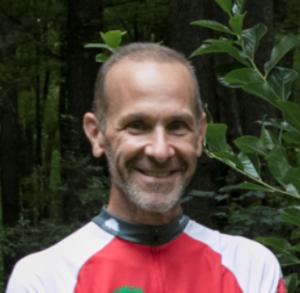Leading Thoughts (April 2019)
 by J. Eric Smith, TREE Fund President and CEO
by J. Eric Smith, TREE Fund President and CEO
I have spent over a quarter-century in leadership roles in the nonprofit sector, and you know what? I still don’t like asking people for money. Like all of my professional peers, I am continually researching prospects, cultivating donors, crafting appeals, making cases, and asking for gifts – and despite all of that effort, more often than not, the answer is still “no.”
Being a fundraiser is analogous to being a baseball batter in that regard: if you’re really good at your job, you can pull a .300 average (i.e. 30% success rate), but more than two-thirds of the time you’re going to strike out, get tagged out, or hit what looks like a glorious stroke into deep center field, only to see it snatched away against the wall. But those of us who make careers in this field learn to shake off those bad at-bats, take some practice swings, and step up to the plate again, with the never-flagging confidence that the next at-bat just might be a highlight reel game winner.
One of the nicest things about being CEO of TREE Fund is that a sizable percentage of our annual gift solicitations are handled by volunteers, most especially our ISA Chapter Liaisons and our Tour des Trees riders. People rightly marvel at the physical challenges of the Tour (I ride it, so I know how hard it is), but as a professional fundraiser, I’m honestly more awed by the fact that our riders are willing and able, year after year, to solicit friends, family members, coworkers, colleagues, strangers, whoever it takes, to raise a lot of money for our research programs. Wow!
That extraordinary level of volunteer commitment allows our staff team to focus more on business partnerships, direct mail solicitations, and other forms of giving that either defray the expenses associated with the Tour, underwrite operations, or enhance our endowment to ensure our long-term viability. Another area where we focus staff attention, though a bit more behind-the-scenes, is on planned giving. Unlike annual giving – where a donor makes a contribution to a charity as an outlay of current assets or income – planned gifts are current decisions to make future gifts, most often from an estate via bequests, insurance policies, or retirement plan distributions.
For individuals and families who wish to make legacy gifts that are guaranteed to support their philanthropic interests in perpetuity, planned gifts may provide the most effective ways of achieving such goals. We have an amazing group of supporters called The Heritage Oak Society who have already established such legacy commitments. We’re going to be making a formal appeal for The Heritage Oak Society this summer, so you’ll hear more from me on this topic then – unless, of course, you decide to give a grateful fundraiser an intentional walk to first base by reaching out to express your interest before I ask.
I’ll be over here in the dugout if you’d like to share some sunflower seeds and talk it over. It could be a winning proposition for you, for me, and best of all, for TREE Fund.
Click here for the complete, April 2019 issue of TREE Press.
